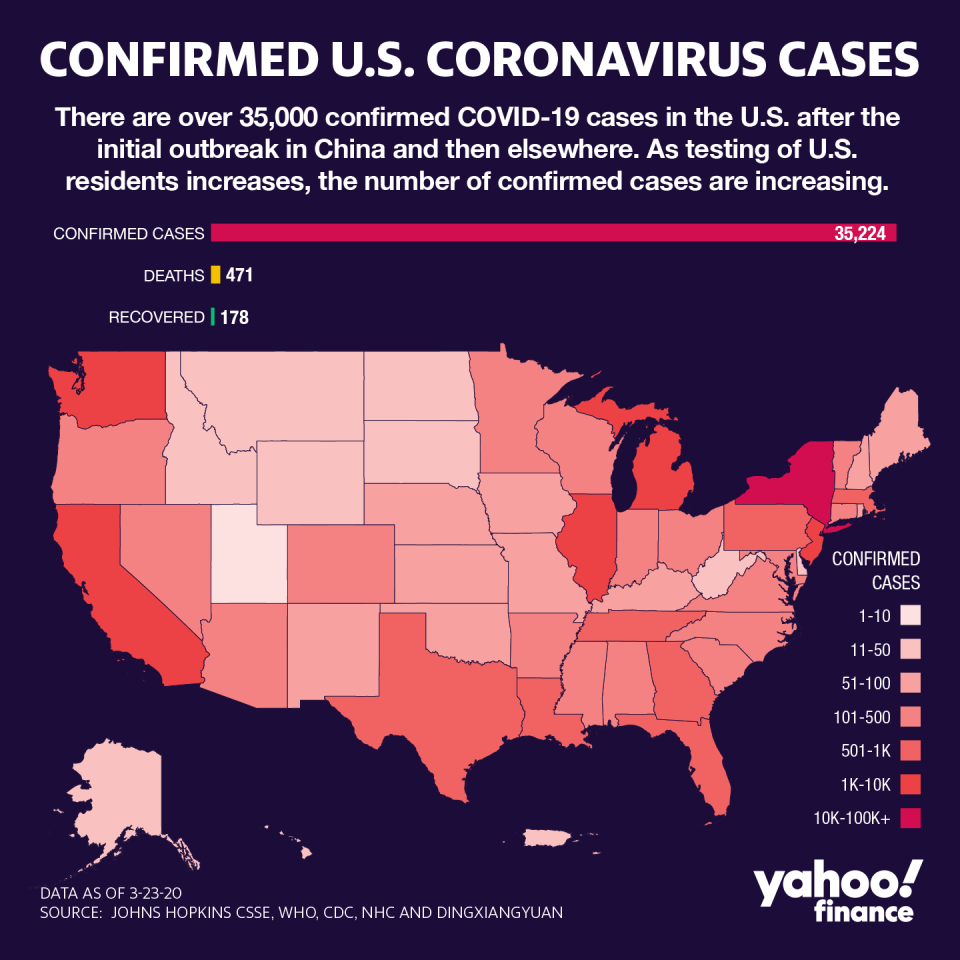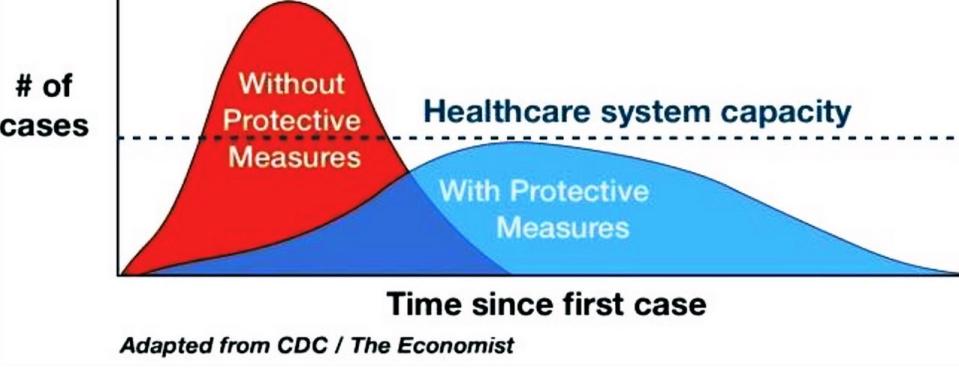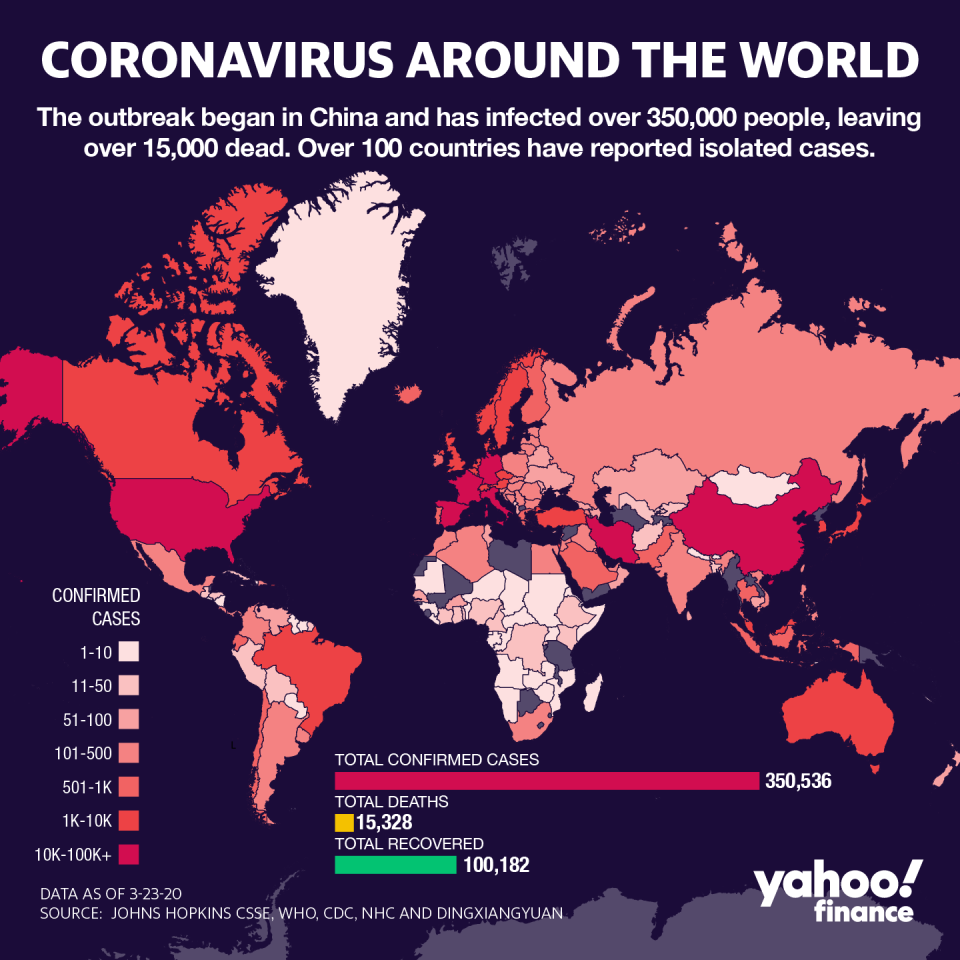'Be patient': Public health expert urges people to trust social distancing amid coronavirus outbreak
While Trump administration is reportedly becoming impatient with blanket social distancing measures, public health officials are urging people to continue practice social distancing.
“Anything we put in place about a week ago, anything we’re seeing that’s beneficial is from two weeks ago,” Yale University’s Dr. Howard Forman, a public health professor, told Yahoo Finance’s On The Move. “We have to be patient. We have to wait this out. It’s a very frustrating and stressful time for a lot of people. You have to recognize that the effort that you’re doing right now are enormous investments in some level of stability or at least starting to plateau for two weeks from now.”

Social distancing is defined as “deliberately increasing the physical space between people to avoid spreading illness” by Johns Hopkins Medicine. Examples include working from home instead of in the office, talking to friends and family through video calls instead of in person, and taking classes online instead of in school.
Forman explained that it “takes five days to go from the point of being infected to the point of having symptoms in 8-9 days, to go from the point of having symptoms to severe disease requiring hospitalization in a typical case, which means that anything we're doing today is going to have to begin to have an effect approximately two weeks from now.”

Flatten the curve
The number of coronavirus cases continue rising across the world, particularly in the U.S., and American health care workers could soon find themselves overwhelmed by an influx of coronavirus patients at hospitals.
Several states and individual cities have taken matters into their own hands by implementing shelter-in-place type orders. The states include New York, New Jersey, California, Illinois, Connecticut, Delaware, Louisiana, and Ohio.
Other state officials have been resistant to shutting down non-essential businesses. Florida Governor Ron DeSantis has been criticized for his hesitation over whether or not to shut things down in the state. Arizona Sen. Kyrsten Sinema has called on her state’s governor to take a more aggressive approach as well.

“We need to see the same measures here on a uniform basis across the country,” Forman said. “We have not put in place national measures the way Italy has.”
Italy has the second-highest number of coronavirus cases in the world, and the most amount of deaths so far. Forman noted that it’s been approximately two weeks since Italy began what he referred to as a “modified lockdown,” and that now we should begin to see the country plateau, or at least slow the number of coronavirus cases.
“If we see that, maybe five days later than that Italy shows a decline in death,” he said. “That would be very strong de-facto evidence that these measures can and will work here as well, with about a one-week lag from that.”

By giving social distancing the proper time to work, Forman stressed, this helps the different states to flatten the curve.
“We have to give it a full opportunity to see what the effect is,” Forman said. “If we can get to a point where we control this so we are not overwhelming our health care systems ... then you can ease back some of the restrictions in a measure way, so that you can see how our health system responds.”
Adriana is a reporter and editor for Yahoo Finance. She can be reached at adriana@yahoofinance.com. Follow her on Twitter @adrianambells.
READ MORE:
Former CDC official on coronavirus: The government response needs to catch up with the crisis
Former Obama official on coronavirus: 'Both the president and Congress are utterly failing'
Democrats and Republicans are divided on coronavirus, polls say
Read the latest financial and business news from Yahoo Finance
Follow Yahoo Finance on Twitter, Facebook, Instagram, Flipboard, SmartNews, LinkedIn, YouTube, and reddit.

